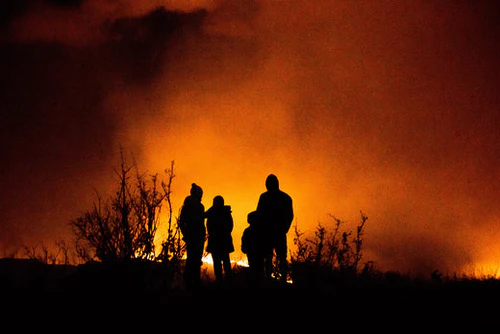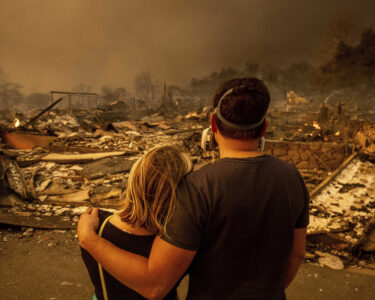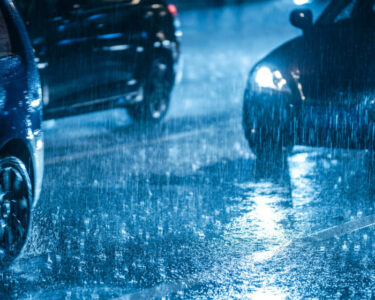California Wildfire Survival Guide: Be Prepared & Stay Safe
Wildfires in California are unpredictable and deadly. Every year, thousands of acres burn, forcing families to evacuate within minutes. Knowing how to prepare and protect yourself can mean the difference between survival and devastation. In this California Wildfire Survival Guide, you’ll learn the essential steps to stay safe before, during, and after a wildfire. Don’t wait until it’s too late—start preparing now.
Why Wildfire Preparation Is Crucial
California’s wildfire season is growing longer and more intense due to climate change. Dry conditions, strong winds, and excessive heat create the perfect environment for wildfires to ignite and spread rapidly. According to the National Interagency Fire Center, wildfires have burned millions of acres across the U.S. in recent years, with California being one of the hardest-hit states.
Being unprepared in the face of a wildfire can put lives at risk. Understanding evacuation plans, emergency kits, and fireproofing your home can help you not only save lives but also minimize property damage.
How to Prepare for a California Wildfire
1. Create an Emergency Wildfire Kit
Having an emergency kit ready can make all the difference. In case of sudden evacuation, you’ll need essential supplies at your fingertips. Here’s what your wildfire emergency kit should include:
- Water (at least one gallon per person per day for 3 days)
- Non-perishable food and snacks
- Medications and first-aid supplies
- Important documents (ID, insurance papers, emergency contacts)
- Flashlights and extra batteries
- Face masks to protect from smoke inhalation
- Phone chargers and backup power sources
- Cash (ATMs may not work during power outages)
2. Fireproof Your Home
Taking proactive measures to protect your home can reduce the risk of fire damage. Follow these fire-resistant home preparation tips:
- Trim trees and remove dead plants within 100 feet of your home.
- Clean gutters and roofs regularly to prevent embers from sparking a blaze.
- Use fire-resistant roofing and siding materials.
- Install metal mesh screens over vents to prevent flying embers from entering your home.
- Create a defensible space by removing flammable materials like wood piles and patio furniture.
3. Plan Your Evacuation Route
Wildfires can spread fast, leaving little time to escape. Preparing an evacuation plan ensures you and your family can leave safely and quickly.
- Identify multiple evacuation routes in case the main roads are blocked.
- Discuss emergency plans with your family and designate a meeting spot.
- Know the locations of nearby shelters and safe zones.
- Practice evacuations regularly to ensure everyone knows what to do.
What to Do If a Wildfire Is Approaching
1. Stay Informed
Follow updates from local authorities, emergency management agencies, and weather services. Use resources like the Ready.gov wildfire page to stay updated on safety recommendations.
2. Prepare to Evacuate
- Keep your emergency kit in a readily accessible location.
- Pack your vehicle with essential supplies and keep the gas tank full.
- Wear protective clothing, including long sleeves, pants, and sturdy boots.
- Close all windows and doors to prevent embers from entering your home.
3. Evacuate Immediately If Ordered
Never delay evacuation if authorities issue an order. Wildfires can change direction unexpectedly, making last-minute evacuations dangerous. If it’s time to leave, do so as quickly and safely as possible.
What to Do After a Wildfire
1. Check for Safety Hazards
Even after the flames are out, dangers remain. Watch out for hot spots, falling debris, and weakened structures. Do not return home until local officials declare it safe.
2. Contact Your Insurance Company
If your home suffered damage, contact your insurance provider to start the claims process. Document everything with photos and videos before beginning any cleaning or repairs.
3. Watch for Health Risks
Smoke and ash lingering after a wildfire can still pose health risks. Wear masks if air quality is poor and avoid stirring up ash dust.
For more updates on emergency preparedness and safety, check out articles on ZexNews.
Final Thoughts
Wildfires in California are a growing threat, making preparation more critical than ever. By creating a wildfire emergency plan, securing your home, and knowing what to do in an emergency, you can improve your chances of survival. Stay informed, stay prepared, and most importantly, stay safe.
“`





